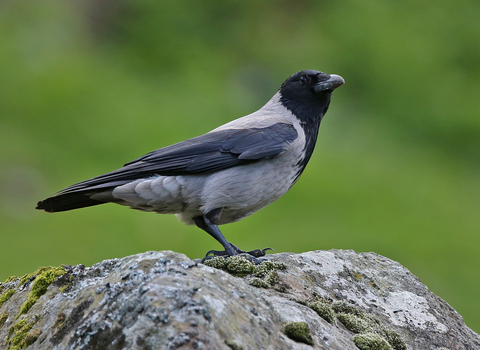
©Margaret Holland
Hooded crow
The hooded crow was thought to be the same species as the carrion crow, but they have now been separated. Less widespread than its cousin, look for it in North Scotland, Northern Ireland and the Isle of Man.
Scientific name
Corvus cornixWhen to see
January to DecemberSpecies information
Category
Statistics
Length: 46cmWingspan: 98cm
Weight: 510g
Average lifespan: est. 4 years
Classified in the UK as Green under the Birds of Conservation Concern 5: the Red List for Birds (2021).
